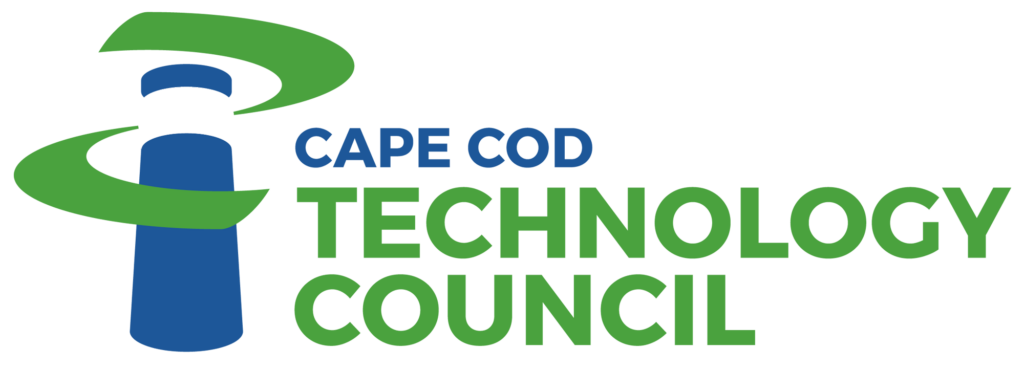
Local is the new organic.
According to our First Friday speaker David C. Churbuck, there’s a shift toward local, which began with the food movement and is continuing into retail. Amazon killing Main Street, he says, is a myth. He sees a migration away from the mall and big box stores, and back to local businesses. People want to do business locally if they can.
Churbuck, who started out as a local journalist on the Cape, is a digital media and marketing executive with over 25 years of experience and innovation in print and online businesses.
He says local in digital has been the last frontier. Local media doesn’t scale very well (see Patch). But there’s a void where traditional news once reigned. All have gone online. Offering content for free is failing as often as putting up paywalls, partly because they rely on display advertising and that’s not a viable market.
So, what is the new display ad? What is happening to local business owners trying to reach consumers? Where do small business owners go now to intercept their market?
One resource is Hibu, which Churbuck referred to as “the new phone book,” replacing the Yellow Pages. For years, letting your fingers do the walking through the Yellow Pages was how you found things, and it was the first place businesses would advertise. With Google, people no longer needed the Yellow Pages, and business plummeted.
Many things have moved in to take its place, but Churbuck doesn’t see an aggregated local online media forming. Instead, there’s a patchwork of a lot of things out there, including sites which offer services for local merchants beyond what Google offers. Yelp, Trip Advisor and Angie’s List are a few niche examples. We’ve also discovered Alignable, a b-to-b and b-to-c proficer. Created by a Constant Contact executive, Alignable is catching on here on the Cape (read the article in the Boston Business Journal).
More local businesses are moving into the online market, using Square, Shopify, Go Daddy and others.
People are still very interested in SEO, despite Google’s best efforts. “We spend a large amount back into SEO to make sure our sites are on the first page of search results,” Churbuck said. “All of our customers judge success on whether or not they show up on the front page.” Google goes out of its way to punish SEO. In their latest algorithm switch they introduced quality rankings, based on the number of citations, determining the authority of the page. They are discreet about changes, and companies have been driven out of business when they’ve run afoul of the new algorithm. “If you’re trying to do SEO, you’re doing it wrong,” he said. Instead, go for frequent, high-quality change. Or advertise.
“By the time I left Lenovo,” he said, “40% of marketing budget was going to google.”
In social media, LinkedIn has lowered the age limit, allowing 14-year-olds to join (read the Forbes article). LinkedIn, which began as an online business card, has shifted over the years towards HR departments. Recruitment is now LinkedIn’s largest source of revenue. It is the new Monster.com.
There are also changes on Facebook, where small business are being pushed into ad marketing. Any attempt to generate organic “likes” on business pages is not effective. It seemed people may move to Google+, but recently that platform is also oversharing. Everyone is concerned about privacy, and it’s very difficult to control the settings.
The demographic has shifted dramatically. Kids know they need to be very careful because they’ve been burned on social media.
Things companies are doing right: customer lifestyle management, including loyalty programs. It’s great marketing science because it’s a source of big data. Customers hate companies that are stupid. If a customer comes to the site for service or a part, they don’t want to be spammed with product ads. Customers want the company to know them, and deliver customized service.
“You’ve got to go to a model where you’re receiving the customer messages and responding to them, rather than expecting them to respond to you,” Churbuck said.
But, he also says, there’s “‘The Uncanny Valley.’ You can’t put too accurate a face on a robot, or it looks creepy.” The same goes for how much you know about your customer. Show you know enough to be helpful, but not be creepy. If you’re going to use data to send a Starbucks ad to someone’s phone, send the location they’re heading toward, not the one they just passed.
Another dramatic shift is from desktop to mobile. Churbuck recommended moving to a model where people don’t have to type, because they don’t have a keyboard anymore.
People also have “app fatigue.” Mobile web content is far more important – and yet most small business websites are not optimized for mobile. Churbuck suggested that websites need to move from “search and find” to “discover and explore.”
He says people don’t watch video ads, but pointed out that we do go to videos when we need to figure something out. If a local business was the one narrating the video, you’d likely go give them your business and fix what you’re trying to fix. There’s money in problem solving.
An educated client is a good client. There’s an opportunity for businesses to be the educator for these projects, and then they have you as a customer. The millennials have a give-back mentality, where free information earns you value.
Finally, Churbuck said “the new table stakes is to listen and respond. Customers expect it.”
David C. Churbuck is a founding partner of Eastman Advisors, where he specializes in digital marketing, ecommerce, and digital media as part of the firm’s corporate advisory practice.
He was previously Vice-President of Global Digital Marketing at Lenovo, the world’s second largest PC manufacturer and home of the ThinkPad and IdeaPad lines of notebook computers.

